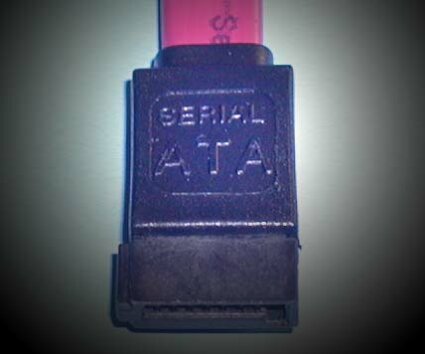Back To The Future: Serial ATA Arrives At Last
Back To The Future: Serial ATA Arrives At Last
At last - a year after the standard was finalized, the first Serial ATA products are about to hit the stores. Practically all controller card producers already have compatible products ready to go, but hard disk manufacturers are waiting until fall before they release the hard drives. In this article, we take a look at a number of devices to give you our first impression of Serial ATA.
It has been clear for some time that the IDE/ ATA standard is well overdue for replacement. The inflexibility of parallel ATA stands in stark contrast to users' constant search for improved performance. And the cables are too short and not reliable enough.
Parallel data transfer (sending data along a number of parallel routes) has always meant a large number of wires and high frequency signals prone to electrical interference. Serial ATA follows in the footsteps of other successful standards that are also based on the principle of serial data transfer. Ethernet, USB, FireWire and other technologies, such as AMD's HyperTransport, are all serial technologies, some of which boost data transfer speeds even further by channel bundling.
Serial ATA had to meet a number of objectives. It had to be fast, user-friendly and self-configuring. Another key requirement for the developers was backwards compatability; serial ATA had to be completely software compatible with parallel ATA. It was also felt that the new standard should be applied as widely as possible, and as a result, the technology is now being applied to SAS (Serial Attached SCSI), currently under development. In a few years' time, Fiber Channel is likely to receive some stiff competition from SAS, thanks to its target of 600 MByte/s.
After three years in the making, the first devices are finally heading for the stores. Will Serial ATA prove to be the fast, easy and reliable interface we have been looking for?
Serial Is Fast
"Serial is fast." A few years ago, we would have gotten some strange looks if we'd said that. The COM port was never known for its speed. Let's not forget, however, that today's most important standards (USB 2.0, Firewire, Ethernet, V-Link, MuTIOL, HyperTransport, RapidIO) are all serial-based, yet they are fast and provide high performance.
Thanks to serial transfer, Serial ATA needs only two data channels - one for sending and one for receiving. These are supplied with a more modern 250 mV, in contrast to the 5 V typically used with IDE. With differential signaling, interference on one signal affects the other signal by the same amount. Because the signals run phase reversed, interference is self-cancelling. Twisting the wires is no longer necessary.
Get Tom's Hardware's best news and in-depth reviews, straight to your inbox.
The features in brief:
- 150 MByte/s maximum transfer rate (300/600 MByte/s envisioned for the future)
- Hot-plugging capability
- Two power saving modes: partial and slumber
- Overlapping (commands)
- Tagged command queueing
- Seven-wire data cable. Connectors measure just 8 mm wide.
Current page: Back To The Future: Serial ATA Arrives At Last
Next Page Finally: Thinner And Longer Cables
Patrick Schmid was the editor-in-chief for Tom's Hardware from 2005 to 2006. He wrote numerous articles on a wide range of hardware topics, including storage, CPUs, and system builds.
